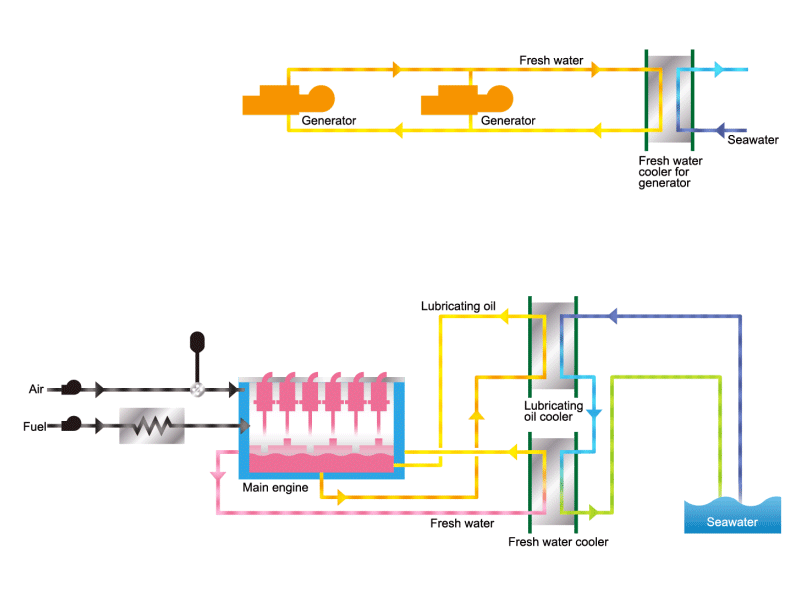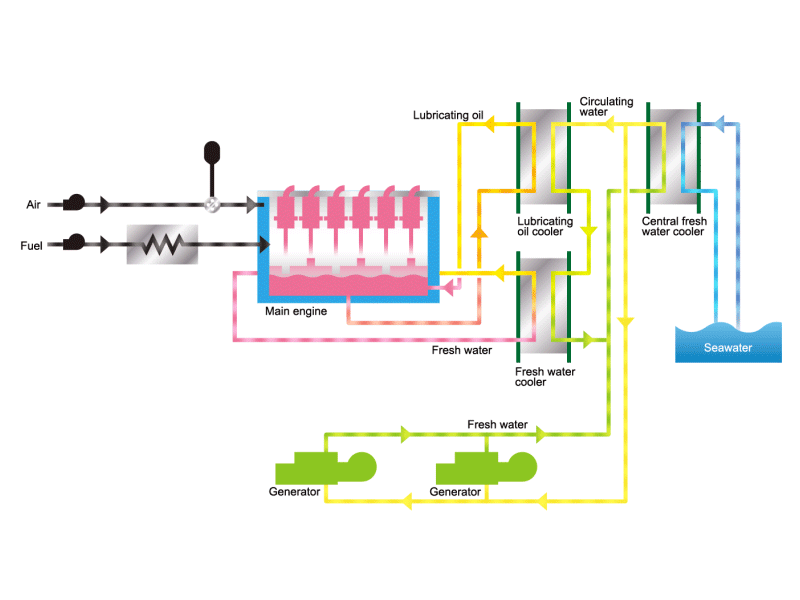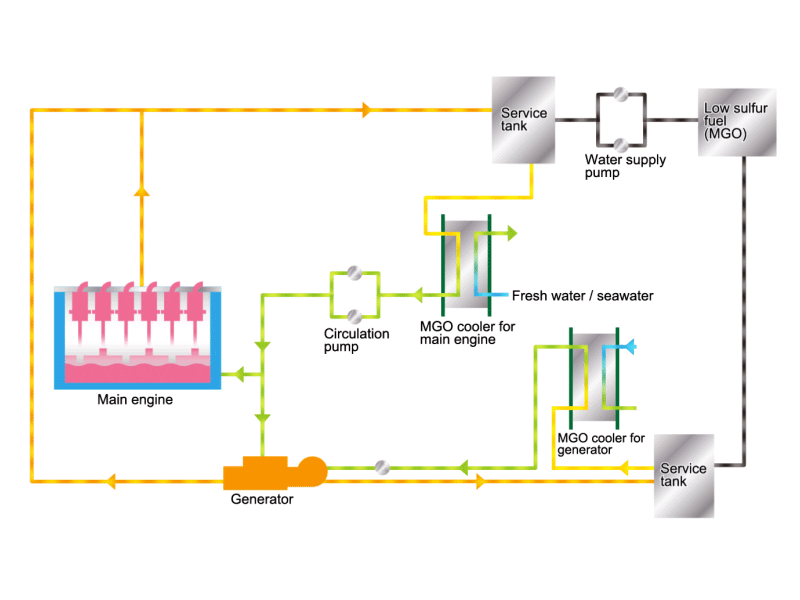 Ships
Ships
- Process overview
- From tankers and LNG carriers to container ships, car carriers, and even luxury passenger ships, reliable equipment and devices are essential in order for the ship to complete its voyage as planned without problems. HISAKA heat exchangers have earned a great deal of trust and are used not only in Japan, but also in ship and shipbuilding industries around the world.



 MGO Cooler
MGO Cooler
The use of low-sulfur fuel oil such as MGO is required to comply with exhaust gas regulations. HISAKA heat exchangers are used as MGO coolers for cooling the fuel oil, in order to reduce the load on the engine.
MGO cooler with shock absorber
When a plate heat exchanger is used as an MGO cooler, cracks can be expected to develop in the plates due to engine pulsation. A mixture of two fluids, when water mixes with the fuel due to cracks in the plates, will hinder navigation. To prevent the risk of plate cracks due to engine pulsation, HISAKA has developed an MGO cooler equipped with a pressure buffer mechanism to maintain pressure stability.
-
- Eliminates trouble caused by plate cracks
- The addition of a pressure buffer improves safety against the development of plate cracks.
-
- Sets optimal plate thickness
- The plate thickness is set by measuring the plate fatigue limit with a pulsation tester.
-
- Pressure buffer with optimal design
- HISAKA selects pressure buffers based on our own test data, to achieve a compact size.

Dual wall MGO cooler
In MGO coolers that use dual wall plates, the heat transfer plate has a double structure. So, even if a plate cracks due to pulsation, MGO and cooling water will not mix. For MGO cooler, HISAKA provides both plate heat exchangers with shock absorbers and dual wall plate heat exchangers.
- Safe and secure structure that prevents the mixing of two liquids
- Dual wall plates have a structure in which the area around portholes of two stacked plates are laser-welded. Since they have a double structure, even if the heat transfer plates are damaged, the fluid will leak to the outside through the gap between the two heat transfer plates, preventing the mixing of the two liquids.






